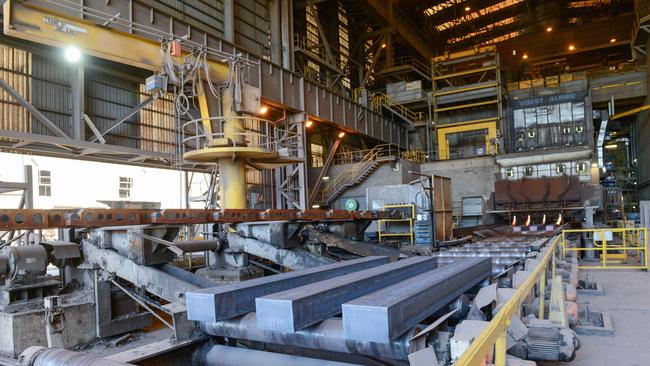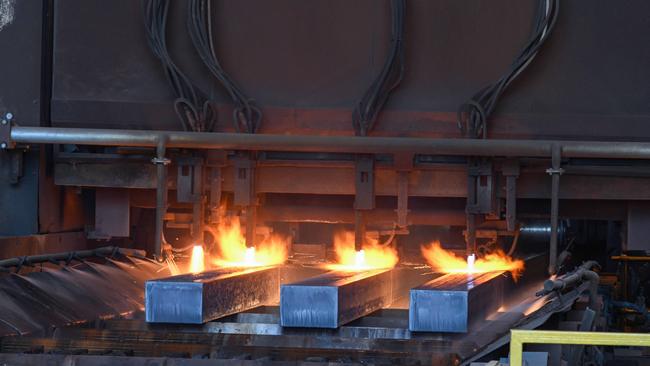Federal budget: $2bn to underwrite green hydrogen projects
A $2bn scheme to underwrite green hydrogen projects headlines a list of new spending initiatives designed to make Australia a ‘renewable energy superpower’.

A $2bn program to underwrite large-scale green hydrogen projects headlines a list of new spending initiatives designed to make Australia a ‘renewable energy superpower’.
Tuesday’s budget included a total of $4bn in new measures to support the nation’s energy transition as global competition for transition-linked capital intensifies.
The government said its Hydrogen Headstart program would provide revenue support for large-scale renewable hydrogen projects through ‘competitive hydrogen production contracts’, which would help ‘bridge the commercial gap’ for early-stage projects.
The government said the investment would put the country on course for up to a gigawatt of electrolyser capacity by 2030 through two to three flagship projects.
However, it is not clear how the competitive production contracts used to distribute the $2bn in funding will work, and government officials are believed to still be consulting with industry about the details of the scheme.
The measures are likely to fall short of the broadbased subsidies industry have called for to support the development of a local hydrogen industry in the face of the massive packages on offer in the US and other competing jurisdictions.
In his budget speech on Tuesday night, Treasurer Jim Chalmers described the global shift to clean energy as the “biggest opportunity for growth and prosperity”, and Australia had the potential to become a world leader in hydrogen production and export.
“Hydrogen power means Wollongong, Gladstone and Whyalla, can make and export everything from renewable energy to green steel,” he said.
“Seizing these kinds of industrial and economic opportunities will be the biggest driver and determinant of our future prosperity.”
Green hydrogen, powered by renewables, can be used in the manufacture of ‘green metals’ and can also be liquified for export.

Government figures suggest Australia’s pipeline of clean hydrogen projects represents close to 40 per cent of all clean hydrogen projects globally.
Local hydrogen hopefuls include Andrew Forrest’s Fortescue Future Industries, which in its pre-budget submission called for the introduction of a green hydrogen production credit to help the establishment of the industry in Australia, similar to the $US3 a kilogram on offer as part of the landmark US Inflation Reduction Act.
The fact the federal government has not outlined a timeline for real spending on the initiative is likely to be the cause of some angst within the nascent industry. Of the $2bn included in the headline figure, only $165m of spending is included in the budget’s four-year forward estimates, with the $151m bulk of that in the 2026-2027 fiscal year.
FFI and others have been urging the federal government to act sooner rather than later to preserve Australia’s competitive advantage.
“Australia is well positioned as a prospective global hydrogen exporter. We have world-class renewable energy potential, ranking in the top two globally for onshore wind capacity and utility-scale solar PV capacity,” FFI’s pre-budget submission said.
“However, Australia’s success is not pre-ordained, and the costs of complacency are high.”
The government’s hydrogen push is among a raft of energy transition policies and measures detailed in Tuesday’s budget, aimed at supporting the government’s ambition to cut emissions by 43 per cent on 2005 levels by 2030 and to achieve net-zero status by 2050.
A $1.3bn Household Energy Upgrades Fund providing low-interest loans and funding for energy efficient home upgrades, and a $300m Small Business Energy Incentive, offering small businesses' bonus tax deductions for spending on energy efficiency improvements, were confirmed on Tuesday.
Industry-wide decarbonisation will be supported by a new Net Zero Authority, which will be established to help workers in emissions-intensive sectors transition to new employment in clean energy industries.
The authority, which was announced last week, will cost the government $83m over the next four years. It has already garnered the support of unions, industry and green groups.

Meanwhile regional areas affected by recent changes to the safeguard mechanism, which will impose tighter carbon emission limits on Australia’s largest-polluting industrial facilities from July, will share in $1.4bn in funding from the $1.9bn Powering the Regions Fund established in last year’s budget.
That includes a $600m support package for trade-exposed facilities, $400m to support the development of new clean energy industries and help decarbonise existing industrial facilities, and $400m to support the ongoing manufacture of critical inputs to the energy transformation, such as steel, cement, lime, and aluminium.
Dr Chalmers said the new funding measures announced on Tuesday brought the Albanese government’s total investment in energy transition initiatives to more than $40bn, including last year’s $20bn Rewiring the Nation program, which has so far allocated $12bn to major projects including Tasmania’s Battery of the Nation projects and transmission infrastructure to connect renewable energy zones and offshore wind in Victoria.
An undisclosed level of funding for initial auctions under a new Capacity Investment Scheme was also mentioned in Tuesday’s budget papers, which the government said would unlock more than $10bn of investment in renewables generation and storage on the east coast.
The government’s green push follows the landmark Inflation Reduction Act in the US, which allocated $US369bn in subsidies and other support for clean energy technologies, and raised the stakes in the global race for energy transition-linked capital.
The European Union closely followed with its €250bn Green Deal, adding further pressure on the Albanese government to respond with its own funding boost.






To join the conversation, please log in. Don't have an account? Register
Join the conversation, you are commenting as Logout